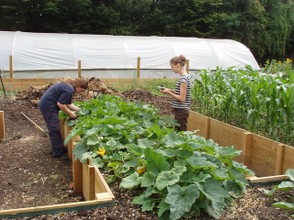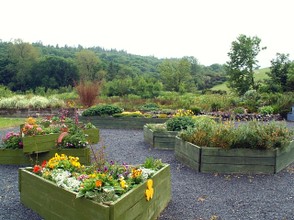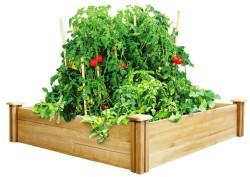When I had an allotment at first I was completely overwhelmed by the enormity of the task in front of me. Grass a yard high and ground as hard as concrete. But then I discovered ‘no-dig gardening’ and raised beds - and things began to look a lot simpler.
I am sure anyone who is a keen gardener already knows all about ‘no-dig gardening’ and about raised beds too. But if, like me, these were once as obscure as the science of nuclear physics, then I hope this article is going to be easy to understand!
I've kept it very simple - there are more complex ways to tackle no-dig gardening and raised beds. For instance, there's 'Lasagne gardening'! But I'm lazy and the less effort the better!
The raised bed goes hand-in-glove with the ‘no-dig garden’ method of planting. For physically challenged or bone-idle gardeners, this is an ideal technique.















 How to Choose a Walking Cane or Stickon 08/01/2014
How to Choose a Walking Cane or Stickon 08/01/2014
 Michael Miller Fabulous Fabric Swatches for Quilting, Crafts etcon 07/02/2014
Michael Miller Fabulous Fabric Swatches for Quilting, Crafts etcon 07/02/2014
 The Drama of Life in the Rock Poolon 06/08/2014
The Drama of Life in the Rock Poolon 06/08/2014
 The Flâneur - Symbol of Modernity in 19th Century Parison 05/09/2014
The Flâneur - Symbol of Modernity in 19th Century Parison 05/09/2014



Comments
Frank, so glad to hear that your beds are thriving!
Thinking of raised beds! We have several newcomers on my allotment site, and most of them have taken to raised beds. One or two have been inspired by my raised beds on my second allotment, which are richly thriving.
gosh Frank! I rest my case!! Thanks for that interesting information! :)
I know that on my allotment carrots will not grow if directly planted in the ground, but they grow well in raised that are filled with compost, and they can grow quite long and fat. Potatoes in the raised beds are ready earlier than their ground-grown fellows.
I read somewhere about a horticulural scientist who has one and a half acres of marginal land on the Brecon Beacons, hills on the Welsh border that have not very good soil. By using a combination of raised beds, polytunnels and chickens he gets £20000 worth of vegetables and eggs from it. That's about £24000 dollars worth.
Abby , I agree! You can't go wrong really.
Sheri, yes, it looks so tidy yet when they are full and things are in bloom you don't even notice the raised bed.
I will say that any tiny success I have had in gardening has been by using this method. It's so much easier than in ground gardening.
I really prefer raised beds - not only is it easier on the back but it also looks neater in the garden.
Helo ologsinquito! Yes, it really does cut down on the workload! :) Thanks for reading.
Great article. This makes it all look so easy!